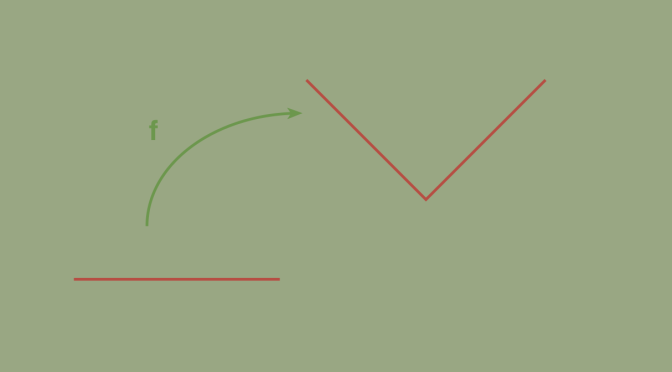Throughout this article we let \(E\) and \(F\) denote real normed vector spaces. A map \(f : E \rightarrow F\) is an isometry if \(\Vert f(x) – f(y) \Vert = \Vert x – y \Vert\) for all \(x, y \in E\), and \(f\) is affine if \[
f((1-t) a + t b ) = (1-t) f(a) + t f(b) \] for all \(a,b \in E\) and \(t \in [0,1]\). Equivalently, \(f\) is affine if the map \(T : E \rightarrow F\), defined by \(T(x)=f(x)-f(0)\) is linear.
First note that an isometry \(f\) is always one-to-one as \(f(x) = f(y)\) implies \[
0 = \Vert f(x) – f(y) \Vert = \Vert x- y \Vert\] hence \(x=y\).
There are two important cases when every isometry is affine:
- \(f\) is bijective (equivalently surjective). This is Mazur-Ulam theorem, which was proven in 1932.
- \(F\) is a strictly convex space. Recall that a normed vector space \((S, \Vert \cdot \Vert)\) is strictly convex if and only if for all distinct \(x,y \in S\), \(\Vert x \Vert = \Vert y \Vert =1\) implies \(\Vert \frac{x+y}{2} \Vert <1\). For example, an inner product space is strictly convex. The sequence spaces \(\ell_p\) for \(1 < p < \infty\) are also strictly convex.
However, an isometry need not be affine and we provide a counterexample.
To see this, let \(E\) be the real line equipped with the absolute value \(\vert \cdot \vert\) norm and let \(F\) be the plane with the sup norm \(\Vert x \Vert = \sup (\vert x_1 \vert, \vert x_2 \vert) \) for all \(x=(x_1,x_2) \in \mathbb R^2\). Let \(g : \mathbb R \rightarrow \mathbb R\) be a metric map, i.e. \(\vert g(s) – g(t) \vert \le \vert s – t \vert\) for all \(s,t \in \mathbb R\). For example \(g(t) = \vert t \vert\), \(g(t) = \sin t\) or \(g(t) = \arctan t\). Now consider the map \(f : \mathbb R \rightarrow \mathbb R^2\) defined by \(f(t) = (t, g(t))\).
\(f\) is an isometry as for \(x,y \in \mathbb R\) we have \[
\Vert f(x) – f(y) \Vert = \sup(\vert x-y \vert,\vert g(x) – g(y) \vert) = \vert x – y \vert\]
However \(f\) is not an isometry for the maps \(g\) mentioned above.

